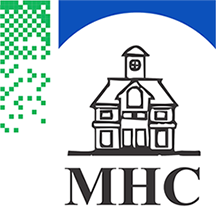Queen Victoria School Heritage Site Plaque
- Site P11:
- Queen Victoria School Heritage Site Plaque
- Location:
- Near Intersection of Ferguson Street and Worthington Street
- Evaluation Score:
- N/A
In 1890, a brick public school was constructed at the north corner of Worthington Street East and Ferguson Street. Known variously as the Central School, Queen Victoria School, and Worthington Street School, the building was partially designed by Dr. J.B. Carruthers. In 1891, the structure consisted of four rooms and a bell tower. Subsequent additions occurred in 1907 and 1925, when the school grew to eight and then twelve classrooms.
Queen Victoria Public School was a robust two-story, red brick building that featured a prominent bell tower on the Worthington Street side. Key features of this tower were the combination of a large arched window on the main level with more gothic style arched windows on the second floor, and a large limestone date stone above the latter windows. A two-tiered roof with splayed eaves and a central gable on each of the four sides capped the bell tower. The window surrounds were detailed with brick soldier courses, limestone sills, and keystones. The corners of the brick were detailed with raised alternating quoins, and the steeply pitched shingled roof featured a central cupola and double brick chimney.
The building served many functions and housed different offices throughout its educational history. In 1895, the school was designated as the “District Training School” or “model school,” meaning one of its functions was to train elementary school teachers for area schools. In the late 1890s, secondary school classes began to be offered in the building. Public School Administrative Offices were housed in the school at one time, and Board meetings were held in the building from the late 1930s to the late 1950s. The final elementary classes in the building were held in June of 1967. In the fall of that same year, Cambrian College (the forerunner of Canadore College) classes took place in the building. These post-secondary classes continued at the school until the early 1970s. The 85-year-old structure was demolished and became a city parking lot in 1976, after having well and truly served the education needs of students of all ages for almost nine decades.

